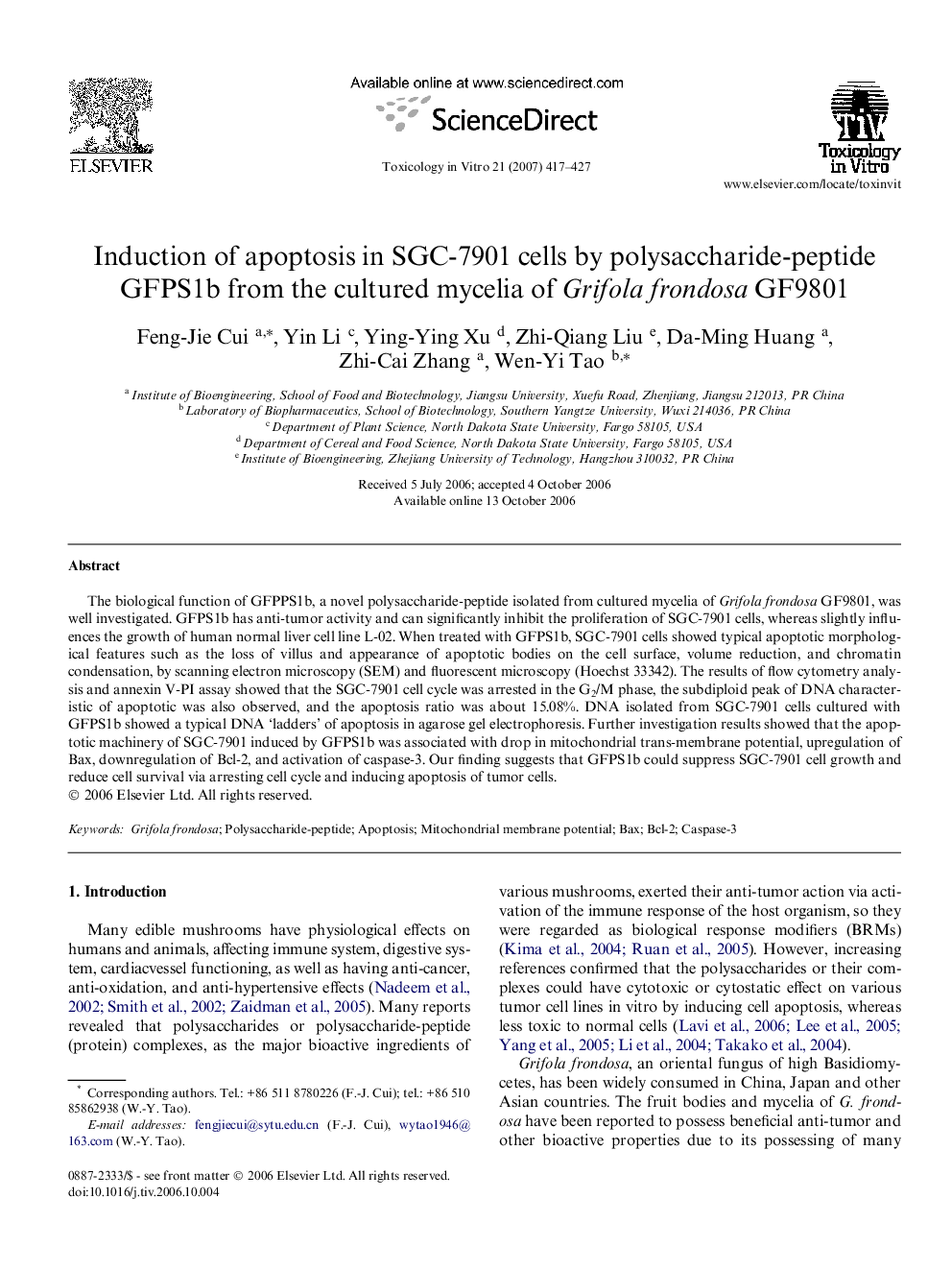| Article ID | Journal | Published Year | Pages | File Type |
|---|---|---|---|---|
| 2603849 | Toxicology in Vitro | 2007 | 11 Pages |
The biological function of GFPPS1b, a novel polysaccharide-peptide isolated from cultured mycelia of Grifola frondosa GF9801, was well investigated. GFPS1b has anti-tumor activity and can significantly inhibit the proliferation of SGC-7901 cells, whereas slightly influences the growth of human normal liver cell line L-02. When treated with GFPS1b, SGC-7901 cells showed typical apoptotic morphological features such as the loss of villus and appearance of apoptotic bodies on the cell surface, volume reduction, and chromatin condensation, by scanning electron microscopy (SEM) and fluorescent microscopy (Hoechst 33342). The results of flow cytometry analysis and annexin V-PI assay showed that the SGC-7901 cell cycle was arrested in the G2/M phase, the subdiploid peak of DNA characteristic of apoptotic was also observed, and the apoptosis ratio was about 15.08%. DNA isolated from SGC-7901 cells cultured with GFPS1b showed a typical DNA ‘ladders’ of apoptosis in agarose gel electrophoresis. Further investigation results showed that the apoptotic machinery of SGC-7901 induced by GFPS1b was associated with drop in mitochondrial trans-membrane potential, upregulation of Bax, downregulation of Bcl-2, and activation of caspase-3. Our finding suggests that GFPS1b could suppress SGC-7901 cell growth and reduce cell survival via arresting cell cycle and inducing apoptosis of tumor cells.
